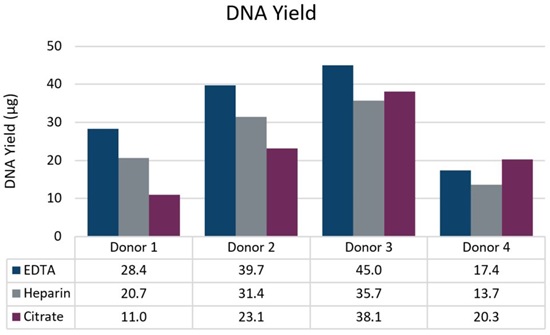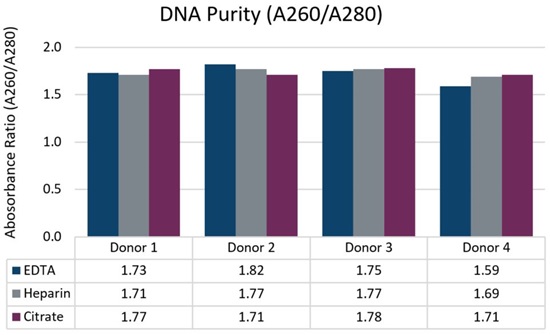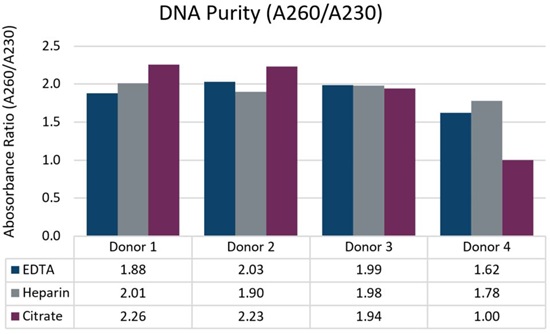DNA Isolation up to 2 mL of Whole Blood
Whole blood samples are critical for disease prediction and diagnosis. Obtaining intact, high quality and concentrated genomic DNA (gDNA) from whole blood is the critical step for downstream research applications such as qPCR, microarray and next generation sequencing (NGS). The term biobank refers to a large collection of tissue samples such as blood and serum that are collected for research purposes. To have access to large amounts of human samples and data, an increasing number of researchers are looking to access available samples through biobanks. Here we present a high-quality, research-ready DNA extraction method from large volume whole blood by using GenFind V3.
Protocol:
DNA extraction up to 2 mL blood using GenFind V3
DNA Extraction up to 2 mLs of Blood Collected in EDTA, Heparin and Citrate Blood Collection Tubes using GenFind V3
Isolation of genomic DNA from 2 mL frozen whole blood was demonstrated by isolating DNA from four healthy blood donors. The blood was collected in three blood collection tubes (BCT) that contained the following preservatives: EDTA, heparin and citrate. DNA yield and purity was accessed using a NanoDrop (Thermo Fisher Scientific). The average DNA yield was 33 μg for EDTA collection tubes, 25 μg for heparin collection tubes and 23 μg for citrate collection tubes (Figure 1).

The average A260/A280 purity ratio was 1.7 for all collection tubes (Figure 2).

The average A260A/230 purity ratio was 1.9 for all collection tubes (Figure 3).


